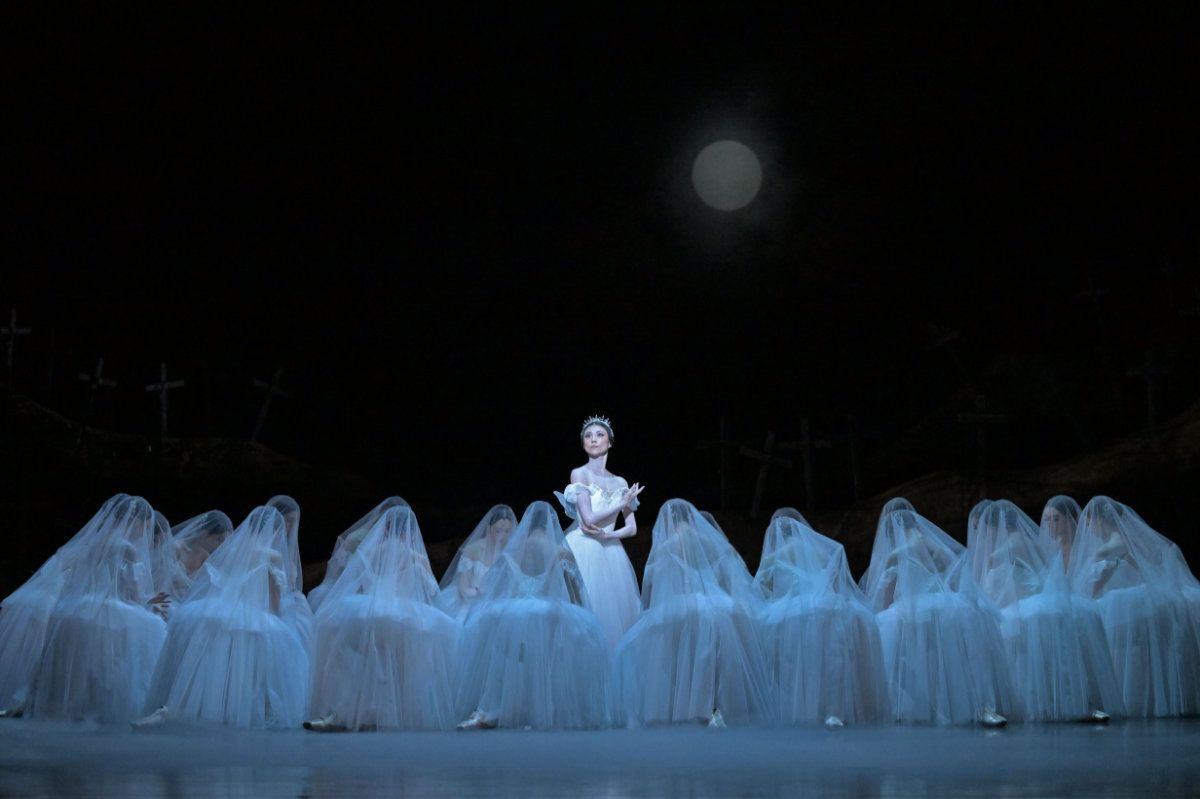National Ballet of Japan in Giselle
Making their first visit to London is Miyako Yoshida’s National Ballet of Japan with their version of the well-known romantic classic…
 Artists of National Ballet of Japan in Act 2 of ‘Giselle’. © Takashi Shikama.
Artists of National Ballet of Japan in Act 2 of ‘Giselle’. © Takashi Shikama.
National Ballet of Japan
Giselle
★★★★✰
London, Royal Opera House
26 July 2025, matinee
NBallet Japan website
www.rbo.org.uk
Poise, fluidity and super togetherness - that’s what I kept thinking as I watched the National Ballet of Japan (NBJ) in what is their UK debut season at the Royal Opera House. That and loads of other superlatives.
NBJ is directed by the much-loved Miyako Yoshida, who spent most of her dance life in the UK, first at Sadler’s Wells Royal Ballet, which morphed into Birmingham Royal Ballet and then dancing with The Royal Ballet in London for fifteen years before retiring in 2010. Yoshida was often talked of as an exquisite jewel of a dancer, one who was deeply musical. Having run NBJ for the last five years, her musicality and eye for detail have clearly seeped into the company at all levels. Her Giselle production naturally builds on her own pleasing style but also on all her experience of English classical ballet production values. The NBJ Giselle feels very English, further emphasised by Alastair Marriott (ex-Royal Ballet) assisting with the staging and choreography. It’s a thrillingly super-honed production that looks right.
For those who need it, NBJ has a neatly incisive Giselle synopsis worth quoting in full here (and other companies should note its approachable brevity):
‘The peasant girl Giselle discovers the true aristocratic identity of her lover Albrecht — and that he is betrothed to another. In despair at the revelation, Giselle dies of heartbreak. Her spirit enters the realm of the Wilis — ghosts of women who were betrayed by their lovers and died before their wedding day. All men that come across their path are compelled to dance themselves to death. As Albrecht verges on meeting with the same fate, Giselle intervenes with her love from beyond the grave, saving Albrecht and releasing her own soul from the Wilis.’
As per usual, this Giselle is set in the Rhineland of the Middle Ages and designer Dick Bird has done a stunning job, rich in detail. The stage layout is as we have come to expect, leaving plenty of room for dancing and the costumes are beautifully made of fine fabrics - they must have cost an absolute fortune. The costume for Bathilde (Albrecht’s fiancée) is particularly gorgeous, with its unusual orange splashes and ermine trimmings. The Act 2 romantic tutus for the Wilis are spot on too, the ghostly veils particularly translucent and floaty. The designs, much aided by Rick Fisher’s moody lighting, are one of three high points.
The second high point and a general hallmark of the company, is their speed and togetherness in unison. NBJ delivers a unity of look that you seldom see - particularly the corps as the Wilis, who have gone out of their way to appear identical and to move as one. In this production, they deliver a cut above the Royal Ballet - and that’s in a production that is considered one of the Royal’s best. But for me, the corps unity started earlier in the Act 1 peasants’ dancing. Both sexes, dancing together or separately, are absolutely in sync. They jump together, their lines are together, their arms are together and they describe the same curves. They do all this at a snappy pace, allowing us to admire the finished movement for a few more microseconds than normal. None of the visual noise we often see, and usually make allowances for, is really in evidence - it’s a picture of visual harmony. If the power of the corps is doing things absolutely as one (and I think it is), then this is togetherness at another level and I applaud it mightily.
I saw the Saturday matinee performance with Saho Shibayama as Giselle and Shogo Hayami as Albrecht, both promoted to principal two years ago. As a physical partnership, there was more harmony on display, with beautifully weighted press lifts. Again, you just don’t normally see such super smooth and weighted fluidity and this from the third cast that NBJ has fielded. Wow. My third high point of the production was the dancing and naturalistic acting of Saho Shibayama. Yes, there was much tender delicacy in her touching and ghostly saving of Albrecht, but what pleased even more was her joyous head-over-heels love in Act 1 and musicality in skipping across the stage - pure joy. The feeling of reality is enhanced by the surrounding corps villagers, each with their own rich backstory.
If Shibayama’s Giselle wowed, Shogo Hayami’s Albrecht was danced cleanly, but dramatically it felt a little procedural and like he was going through the motions at times. However, as I’ve said, as a partner he was super on it and very dependable - they looked good together. In a sea of pleasing dancing, the only place where I felt I was seeing matinee casting was in the Peasant Pas de deux of Moeko Iino and Ren Ishiyama - it’s a lot of soloist business under the spotlight and they danced tidily, if without the pushed panache and flourish you might hope for. Perhaps that’s overly harsh - they danced well, but the company overall really lifts the bar and sets a high standard for itself.
Great dancers don’t always make great directors, but judged on this Giselle, Miyako Yoshida is really doing a fabulous job at the National Ballet of Japan. It’s a company that bowls you over with its harmony and togetherness on stage - and in London, it has really marked its card as one of the world’s great classical ballet companies.